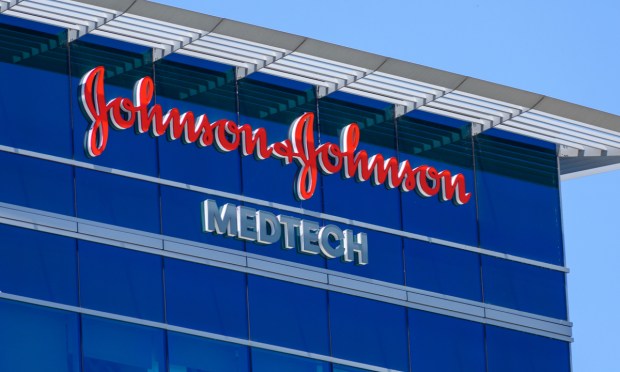
Six months after parting ways with its consumer health unit, Kenvue, Johnson & Johnson has reported total sales of $21.4 billion for the last quarter of 2023, a 7.3% increase from the corresponding quarter in 2022.
The pharmaceutical giant disclosed a net income of $4.13 billion, a rise from the $3.23 billion reported in the previous year.
During their most recent quarterly earnings call on Tuesday (Jan. 23), J&J executives said the earnings growth in the first half of the year would be positively influenced by a 191 million share reduction in Kenvue, with a partial benefit expected in the third quarter.
However, Johnson & Johnson has redirected its focus toward its pharmaceutical and medical devices divisions as primary drivers of growth, highlighting a strategic realignment in the aftermath of the separation from Kenvue.
By focusing on its pharmaceuticals, J&J achieved $13.72 billion in pharmaceutical sales, a 4.2% increase from the previous year. Excluding the sales of its less popular COVID vaccine, the pharmaceutical division earned $13.68 billion.
This marked the third quarter without any U.S. sales from J&J’s COVID vaccine, which generated $44 million in international revenue.
The division’s growth was driven by sales of Darzalex for multiple myeloma, Erleada for prostate cancer, and other oncology treatments. Despite facing competition due to losing patent protection, Stelara, a drug used for conditions like Crohn’s disease, contributed significantly to growth, with biosimilar competitors delayed until 2025 through settlement agreements.
However, the pharmaceutical segment’s growth was offset by declining sales of Zytiga for prostate cancer and Imbruvica for blood cancer, the latter co-marketed by AbbVie.
Both Imbruvica and Stelara are set to undergo the first round of Medicare drug price negotiations under the Inflation Reduction Act.
J&J’s emphasis on medical device sales resulted in the medical devices business achieving $7.67 billion in sales, a 13.3% increase from Q4 2022. This growth was influenced by the acquisition of Abiomed, a cardiovascular medical technology company, in December.
Additionally, expansion occurred in electrophysiological products, assessing the heart’s electrical system, as well as products related to wound closure, orthopedic trauma, and contact lenses.
The success was further propelled by the increased demand for nonurgent surgeries among older adults, which had been deferred during the COVID pandemic.
In Q4 2023, Johnson & Johnson reported sales grew by 7.3% to $21.4 billion, with operational growth at 7.2% and adjusted operational growth at 5.7%. Excluding the COVID-19 vaccine, operational growth was 10.9%. Q4 2023 earnings per share (EPS) were $1.70, a 39.3% increase, and the adjusted EPS was $2.29, up by 11.7%.
For the full year of 2023, reported sales increased by 6.5% to $85.2 billion, with operational growth at 7.4% and adjusted operational growth at 5.9%. Excluding the COVID-19 vaccine, operational growth was 9%. Full-year EPS was $5.20, showing a 15.3% decrease due to a special one-time charge in the first quarter. However, the adjusted EPS was $9.92, indicating an 11.1% increase.
The company confirmed its guidance for 2024, expecting operational sales growth of 5% to 6% and adjusted operational EPS in the range of $10.55 to $10.75. This reflects a growth of 7.4% at the midpoint.
In the pharmaceutical sales department, J&J expects better performance in the first half of the year than the second. They’re looking forward to the introduction of Stelara biosimilars in Europe around mid-2024, as mentioned by company leaders.
Looking forward, J&J has ambitious goals, aiming for a 5% to 7% annual growth rate in pharmaceutical unit sales from 2025 to 2030. They’re planning to roll out more than 20 new therapies by 2030, with over 10 of them having the potential to generate over $5 billion in peak year sales. This includes promising cancer treatments like Talvey and Tecvayli.
As for medical device sales, executives are optimistic about sustained operational sales growth throughout the year.